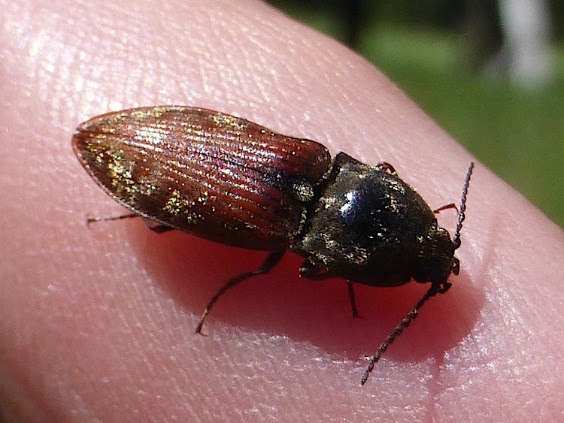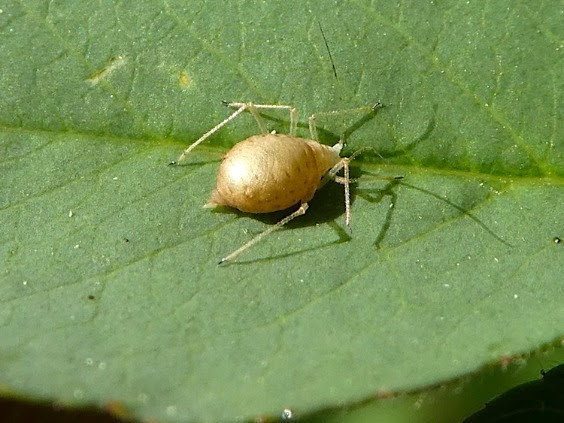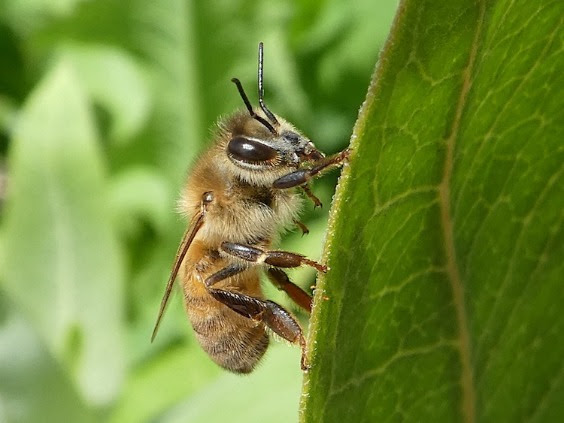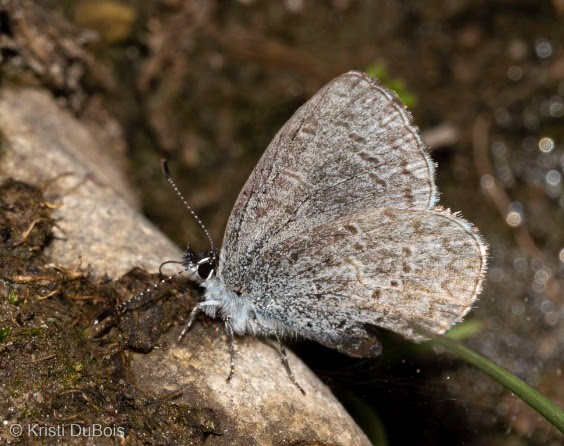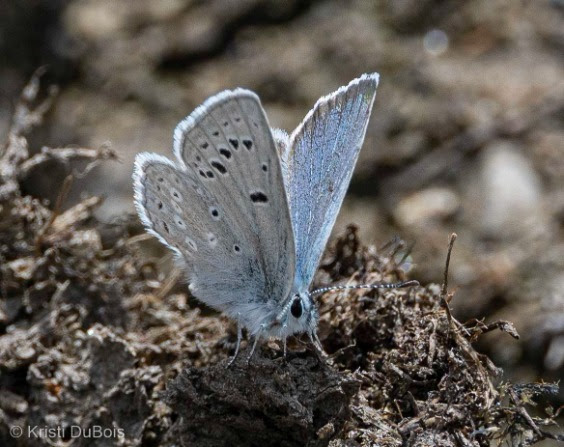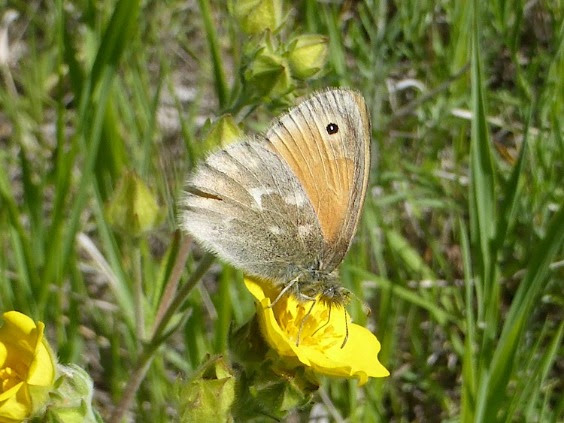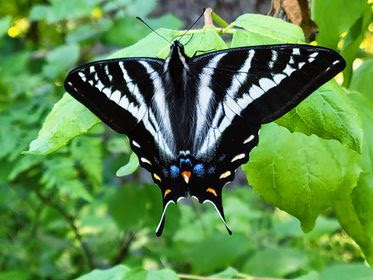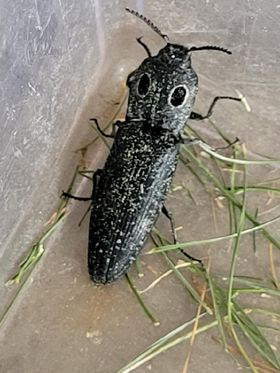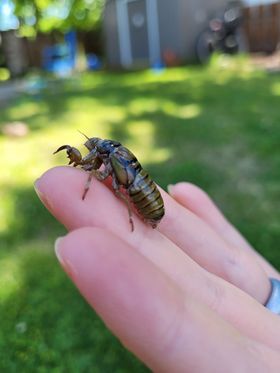This is our most widespread silkmoth in the US. It is also one of our largest, with a wingspan of up to 6 inches. Like our other giant silkmoths, males have […]
Read MoreWhat’s Buzzin’
What can you see around Western Montana right now?
Click Beetle (Prosternon bombycinum)
We couldn’t find a lot of information for this beetle, but we do know that it can perform the family’s signature click trick. Gently pick one up and you’ll not only hear the clicking […]
Read MoreAphid Mummy
What looks like an aphid that’s ready to explode is actually what’s left over after being parasitized by a Braconid wasp (family Braconidae, subfamily Aphidiinae). Braconid wasps are tiny, only about 1/8 […]
Read MoreWestern Honey Bee (Apis mellifera)
The honey bee was one of the first domesticated insects and is the primary species kept by beekeepers for honey production and pollination services. Thanks to their domestication, they can […]
Read MoreEcho Azure (Celastrina echo)
This species of butterfly falls in a subfamily of butterflies known as the blues because …well, the top-side of their wings is blue in color. They are generally one of […]
Read MoreBoisduval’s Blue (Plebejus icarioides)
The Boisduval’s is a larger blue, approaching one and half inches and is on the wing in late spring into summer in a wide variety of habitats (mountain meadows, forest openings, […]
Read MoreCommon Ringlet (Coenonympha tullia)
The eyespot on the underside of the forewing can often help identify this relatively small butterfly, but as with all things, they vary a lot. The color of their wings […]
Read MorePale Swallowtail (Papilio eurymedon)
Havilah shares, “Camping along the Lochsa and these were swarming around us!” What a cool experience! The Pale Swallowtail is the only whitish (off-white to rich oucre) and black swallowtail […]
Read MoreWestern Eyed Click Beetle (Alaus melanops)
“Two Emmas combined their buggy skills for this Western Eyed Click Beetle today. Emma O spotted it at the school in Lolo, Emma R snapped a picture of it!” These […]
Read MoreCicada Nymph (in the family Cicadidae)
We’ve only ever found the shed exoskeletons of the nymphs before. Never the living thing. Cicada nymphs generally spend all of their time underground, where they tap into roots and […]
Read More
